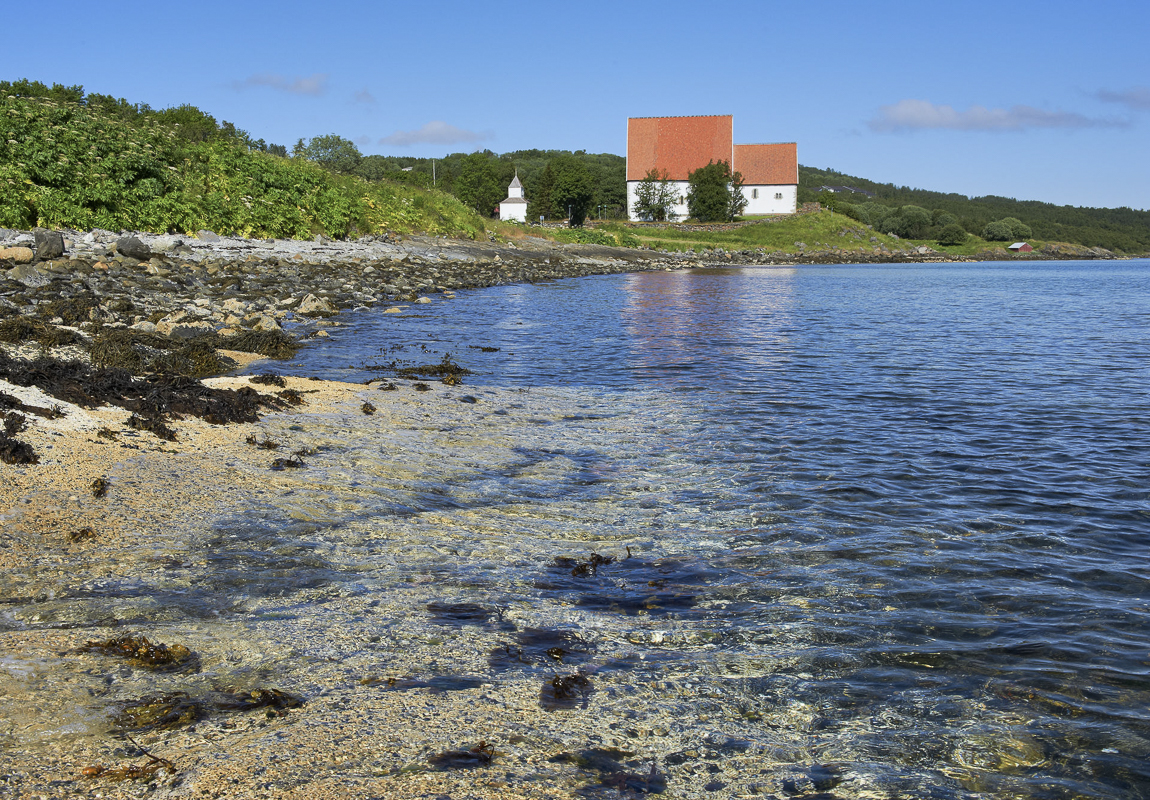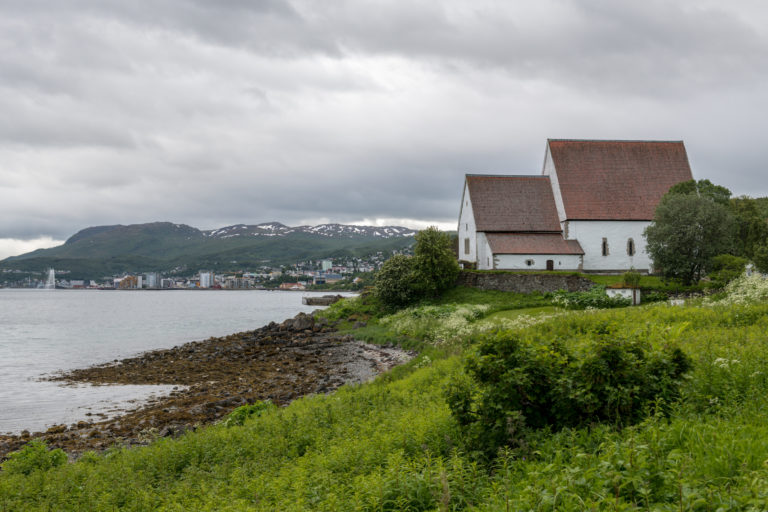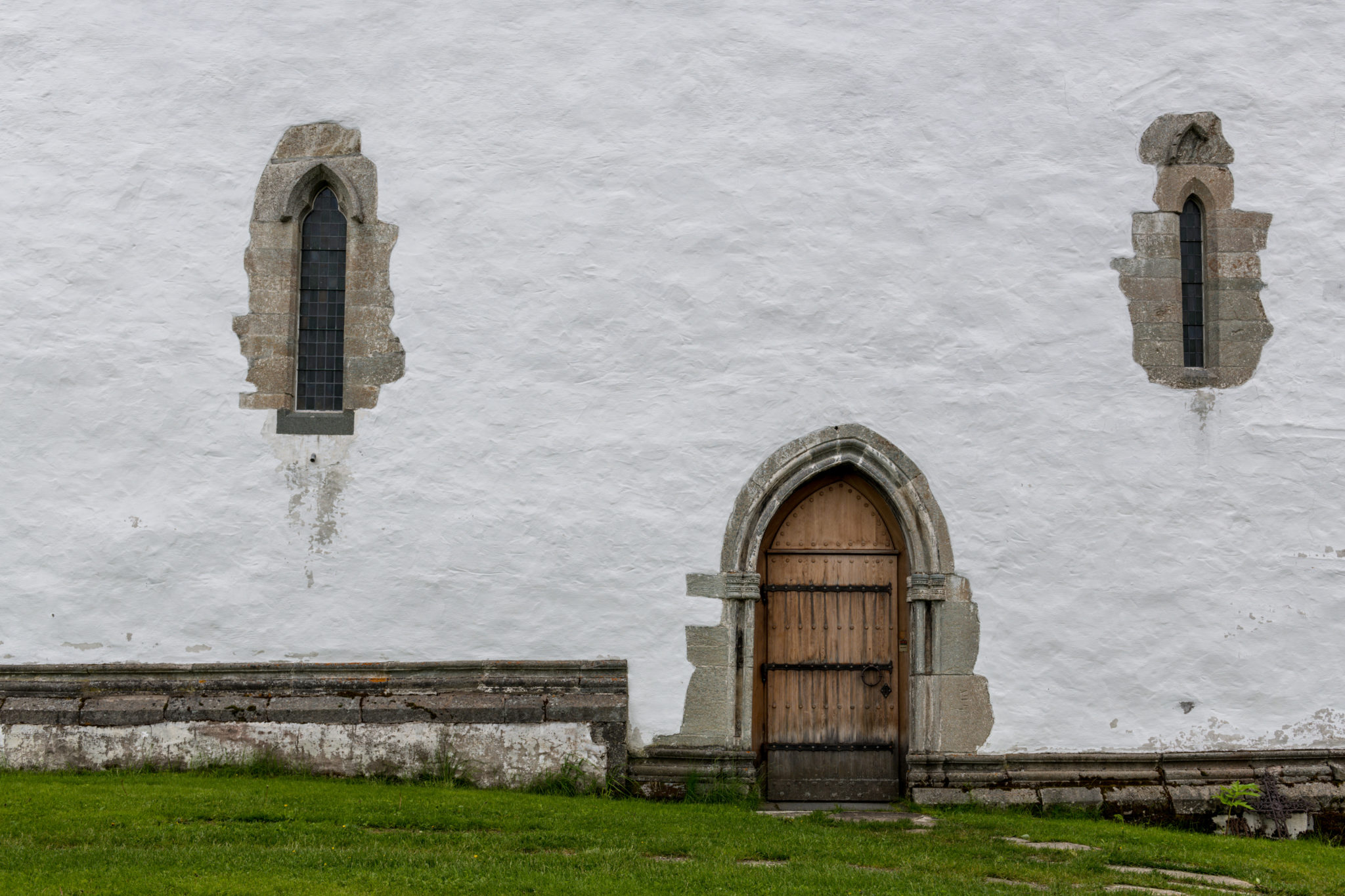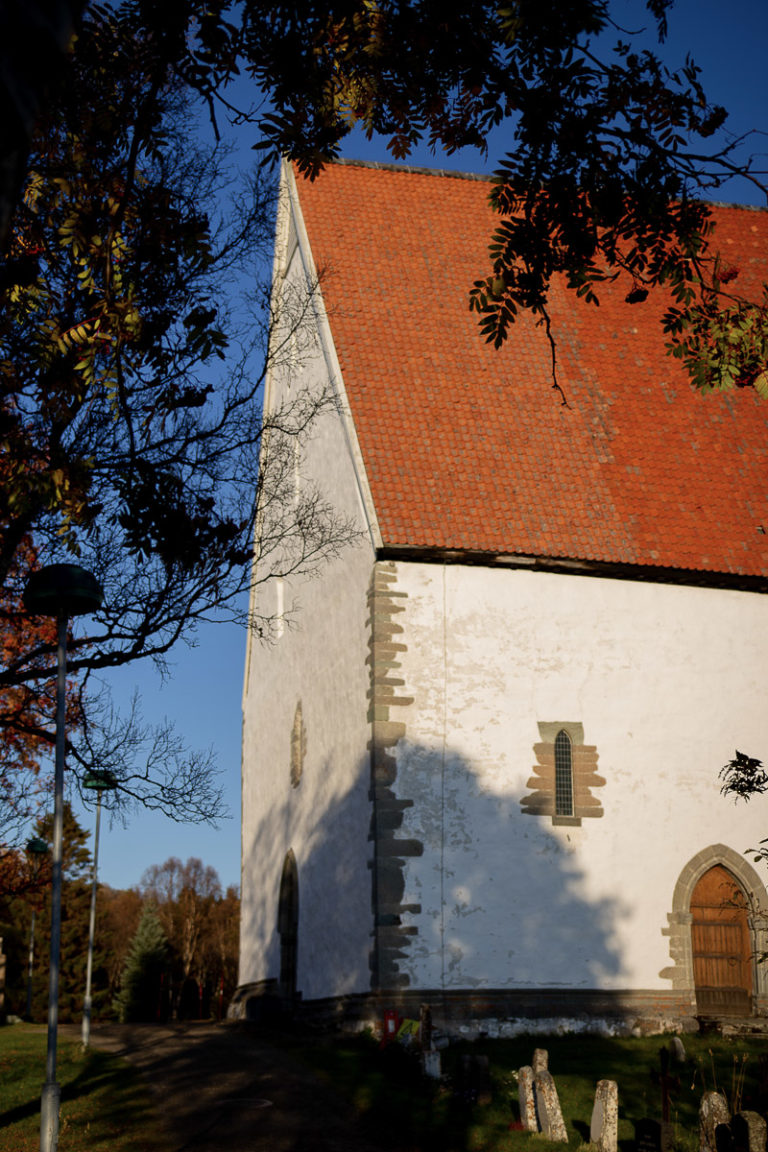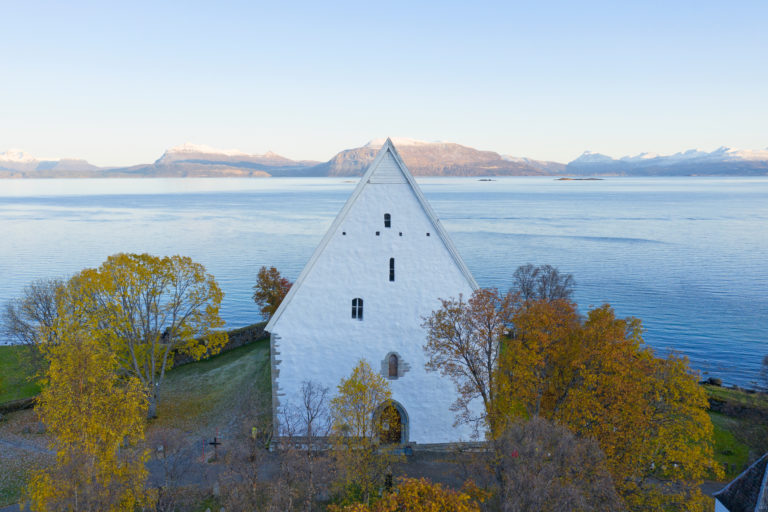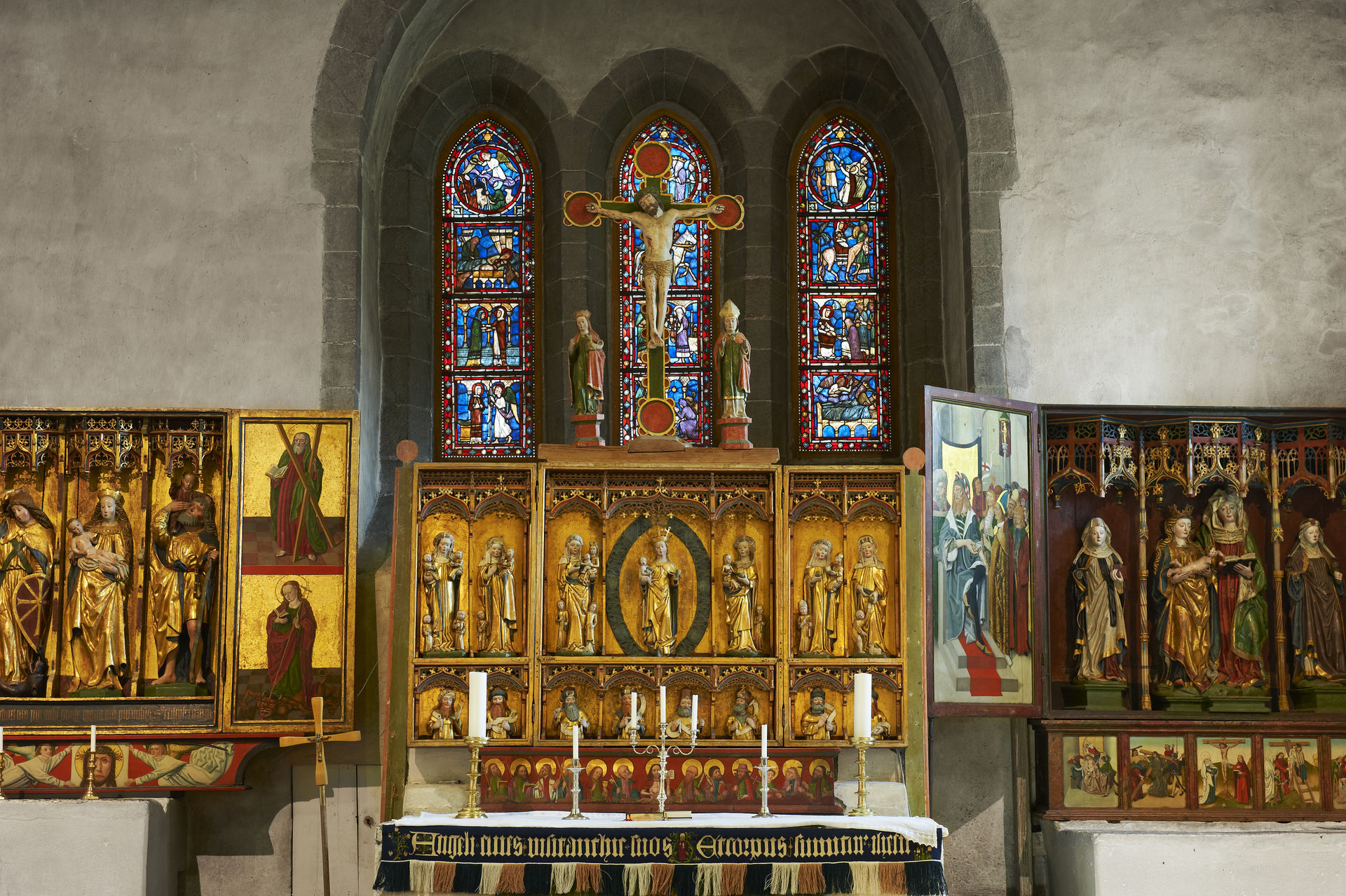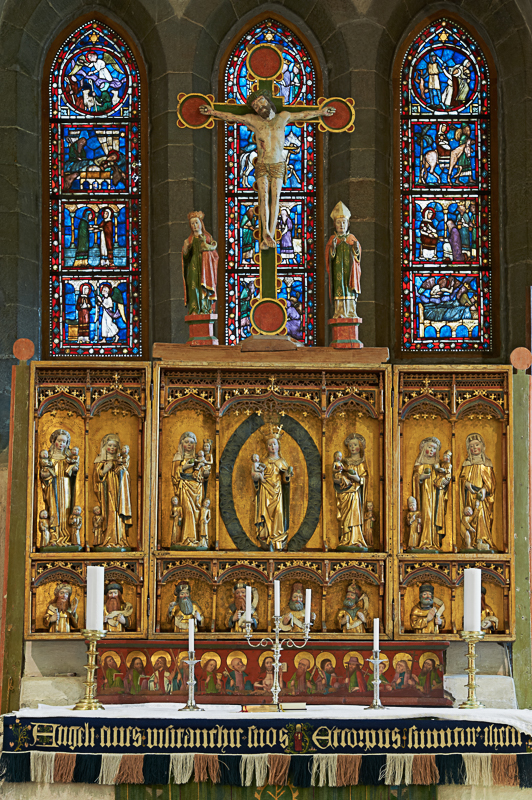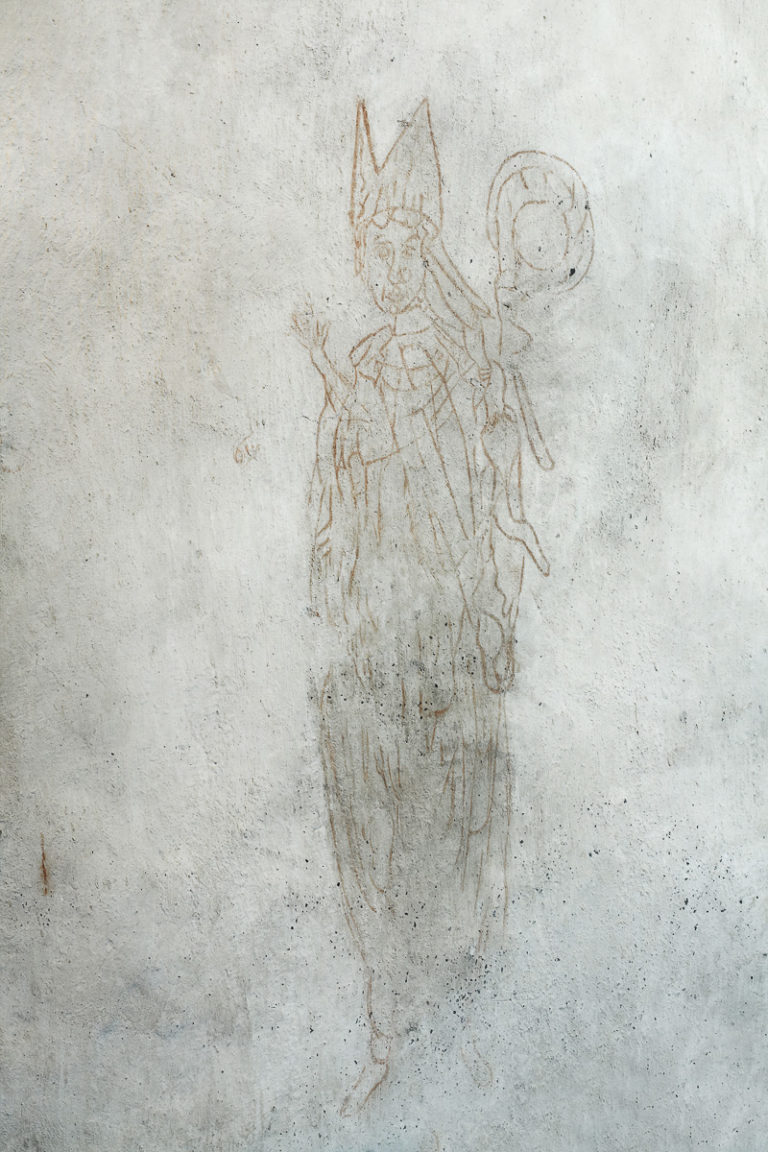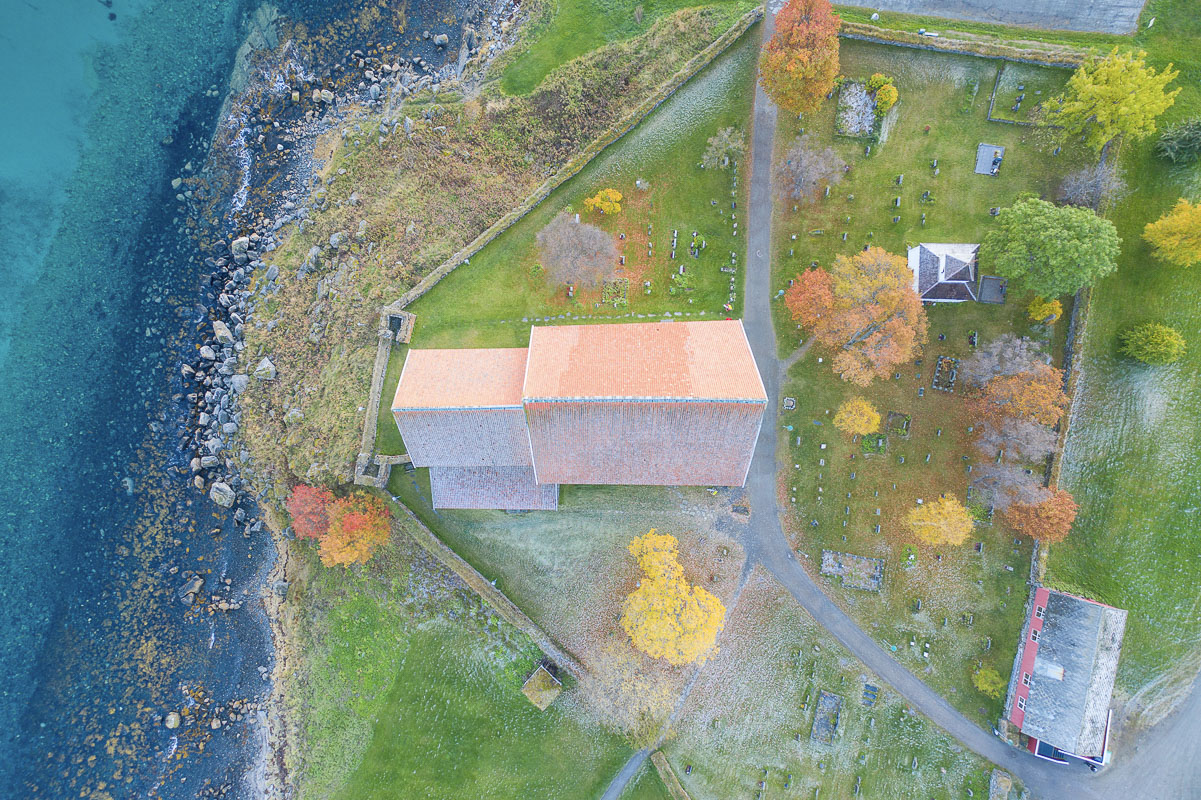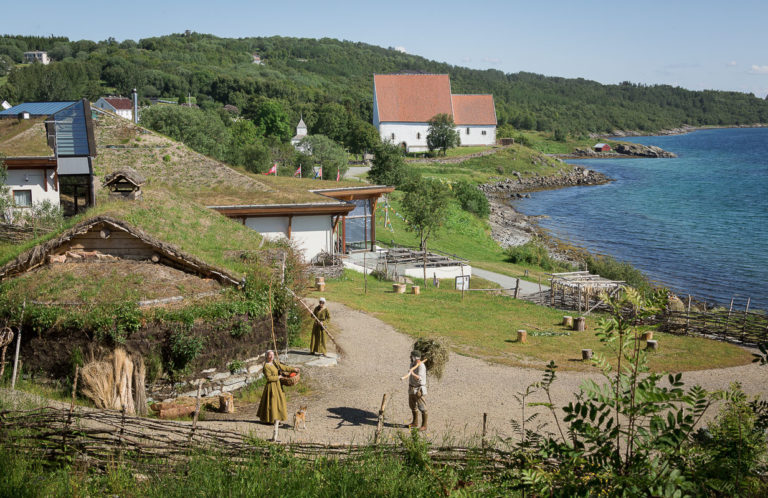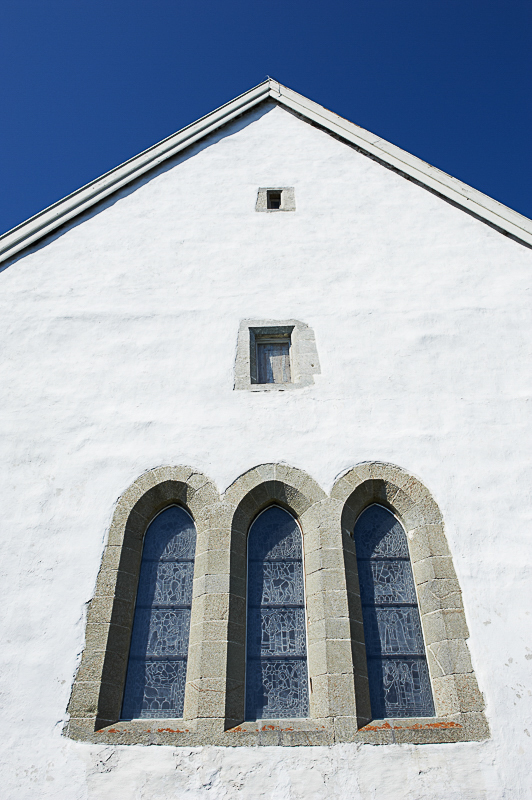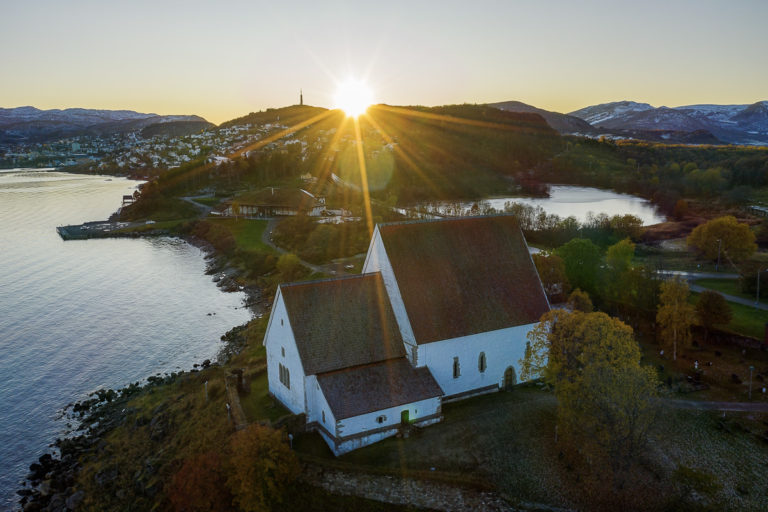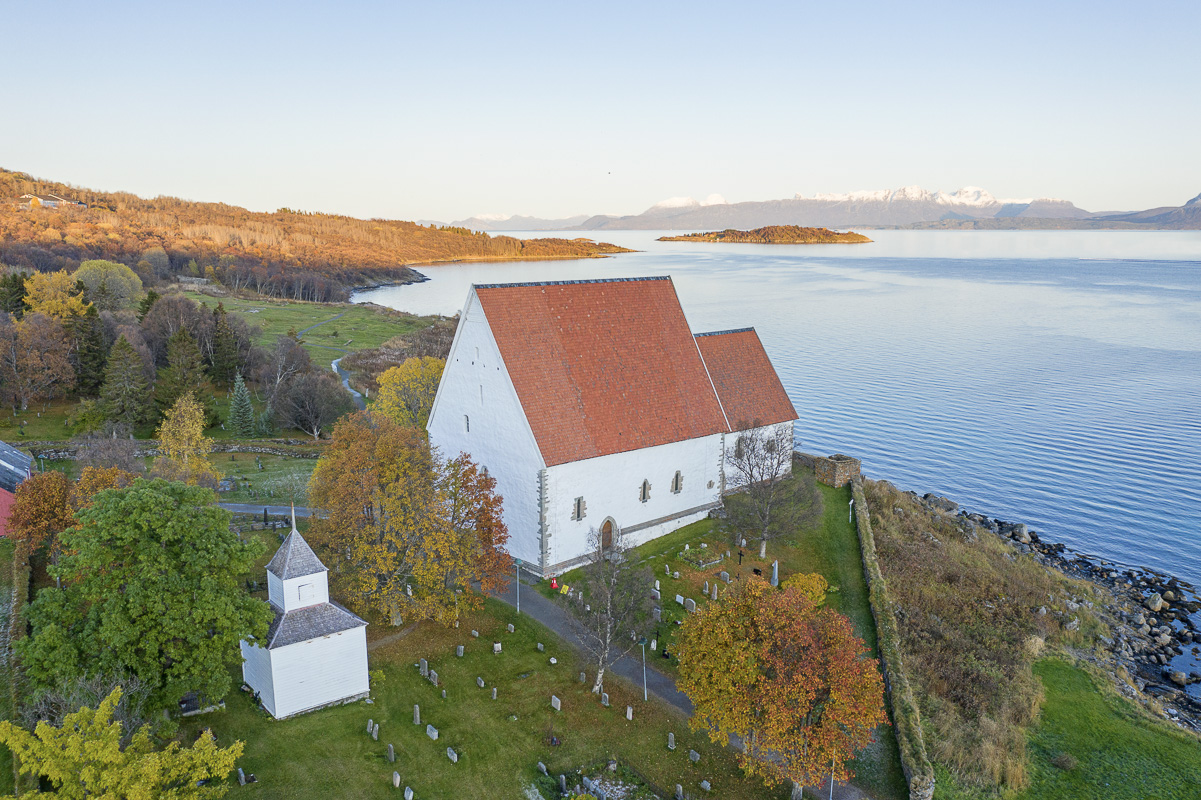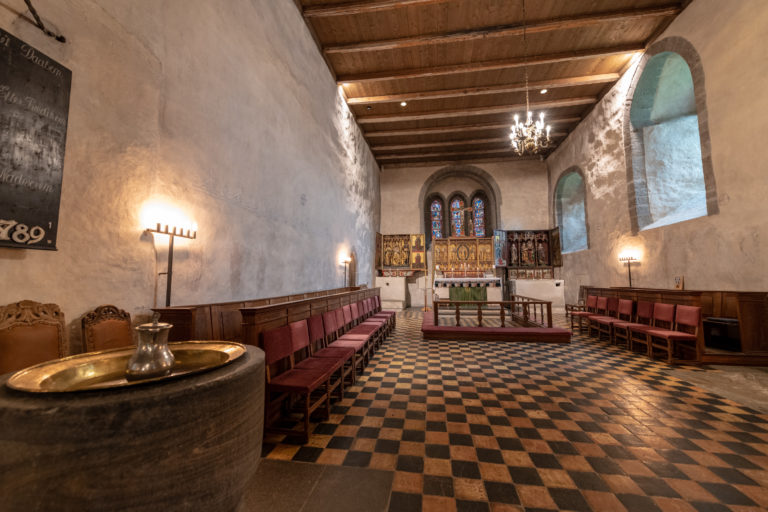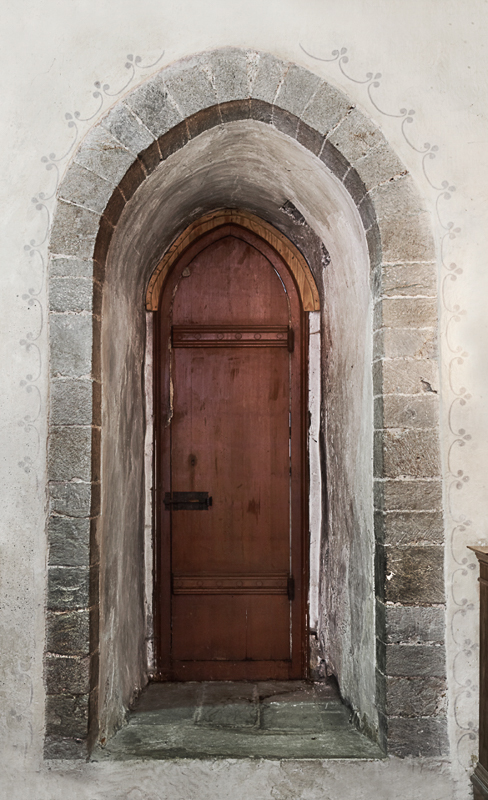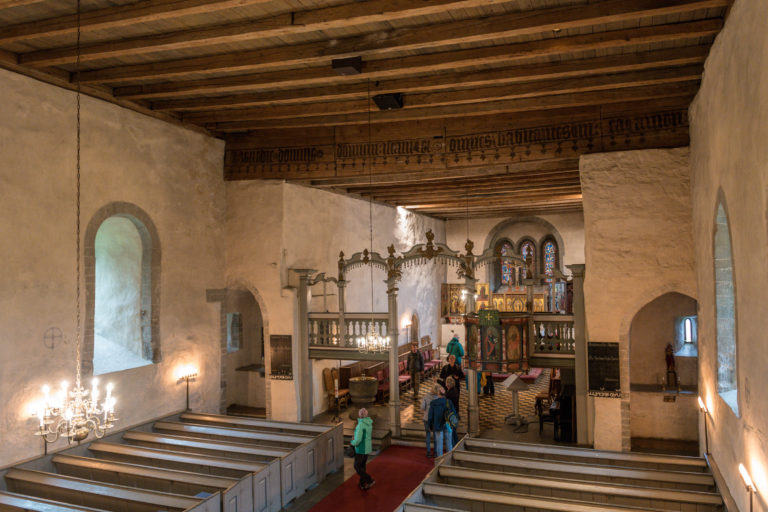The tall, white church at Trondenes has reflected in the waters of Vågsfjord for 600 years. The world’s northernmost medieval church has provided both spiritual and physical protection for the people living in and around Harstad.
Among the Norwegian stone churches from the Middle Ages, Trondenes is one of the most remarkable. It is one of the country’s largest country churches from this period. The interior is among the absolute richest, with treasures in the Gothic style and Rococo. The church is exceptionally well preserved; it survived the 19th century church building boom and demolition completely unchanged. Infinitely beautiful, it stands near the fjord, with wide views of the sea, mountains and islands.
The oldest part was built in 1180-1250 AD
Construction began around 1180. It probably went slow because the choir was not finished until around 1250. At that time, large parts of the masonry in the nave were also built to a height above the windows. The beautiful Gothic portals were now also in place, with style details that can be dated to the 1220s. Around 1250, however, there was a halt in construction – perhaps money was lacking. Thus, the church consisted of a choir and a nave without a roof – for 150 years.
The church was completed in the 15th century
Around 1400 they started again; the walls were completely bricked up, the large west façade was built and finally the wooden roof was laid sometime in the 1440s. The church was now completed and entered its richest period. The tenants on the farms owned by the church paid 6000 kilos of stockfish annually as rent, and it is easy to imagine that a lot of money went to building and decorating the church.
The church was also a defensive structure
The church feels heavy, with thick walls, because it would also function as a fortification. The narrow windows are high up on the wall. They could be used to shoot arrows in a difficult situation. From the 13th century until the end of the 15th century, Northern Norway was subjected to attacks by the Karelians, a Finnish-speaking people allied with the Republic of Novgorod. The royal power was far away, so here one had to be able to fend for oneself.
The church interior is among the richest in the country
The church has a rich interior with many details. The interior is nevertheless simple in relation to how it must have appeared during the Reformation era. We see the remains of frescoes in the choir that may have adorned the entire church, but which covered with lime after the Reformation. Decorations from Trondenes have also found their way to other churches and to museums.
The altarpieces are an art historical treat
The treasures of the church are the three altarpieces from the late Middle Ages. They were made in the northern German Hanseatic cities, probably in Lübeck. How did art of such quality find its way all the way up to Trondenes? The answer probably lies in the stockfish trade and the wealth this created along the coast of Northern Norway. A fourth altarpiece is today on display at the Cultural History Museum in Oslo. It had at one time or another ended up in Kvæfjord Church, and is therefore called Kvæfjord 1. Kvæfjord 2, which never stood in Trondenes Church, is today exhibited at Trondenes Historical Center.
Three altarpieces form the east wall
The Saint Mary Cabinet on the north side of the high altar was created between 1490 and 1500 and shows the Virgin Mary in the center, surrounded by Saint Michael and Saint Christopher. The main altar, the middle of the three, is somewhat earlier, perhaps from the 1460s. Here, a large number of saints and biblical figures surround the Virgin Mary. The cabinet on the right of the high altar, on the south side, is the Birgitta Cabinet, which is the latest of the three. It was created sometime after 1500 and shows Anna, the mother of Mary, in the middle surrounded by Saint Birgitta and Katarina from Vadstena. At the top of the main altar is a crucifixion group with a crucifix, which may date from between 1460 and 1480.
The Rococo interior harmonises with the Gothic
The crucifix and pulpit are in lush Rococo style from 1792 and are equipped with an hourglass. The priest had to stop preaching once the sand ran out, as the cermon was limited to one hour. The organ is from 1790, and is one of the oldest in Northern Norway. Inside the north door hangs an ell rod, in case people needed to check how long an alen – a Norwegian ell – is. A Norwegian ell is 62,75 cm in lenght.
The church is located on an old site
The cemetery walls are even older than the church, from the 12th century, and probably protect a former stave church that stood in the same place against attacks from the north and east. In the Trondenes Historical Center next door, the church is recreated with bold, colourful frescoes, and you can see another triptych from neighbouring Kvæfjord. The monument just north of the church is a Soviet-style memorial to the prison camp her during the second world war.
